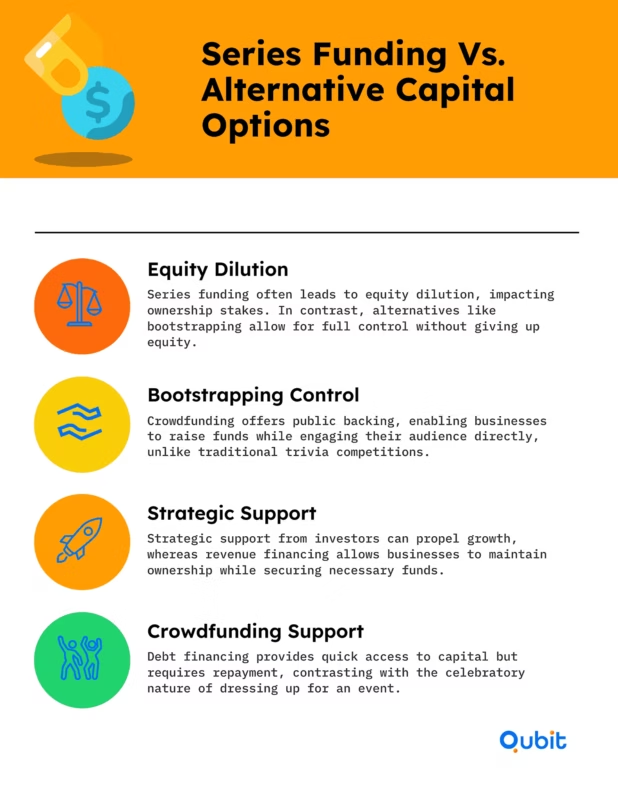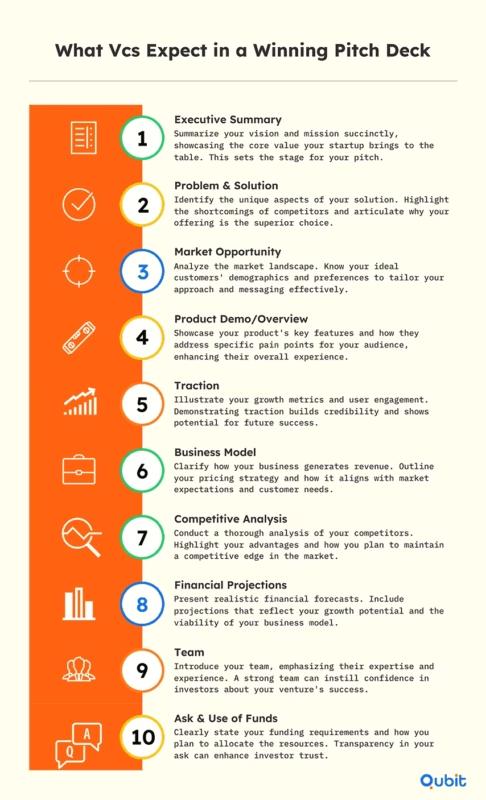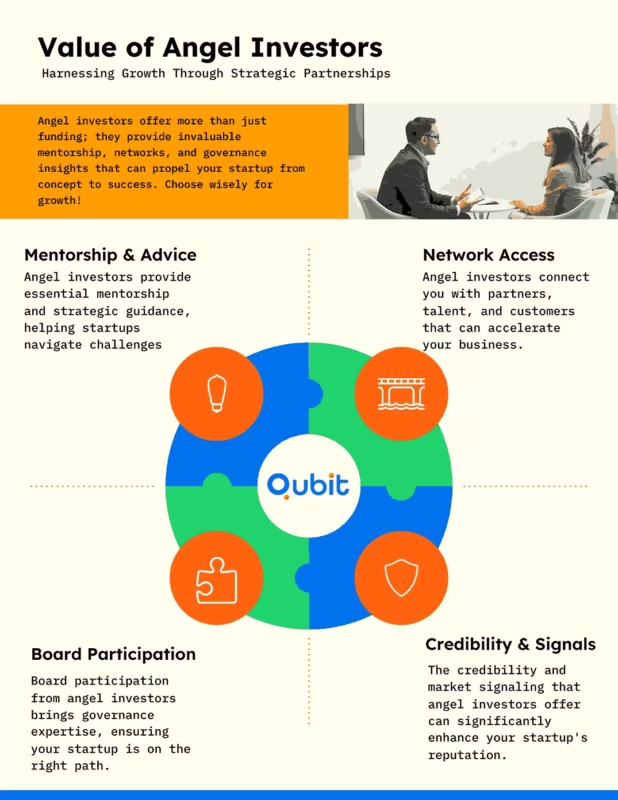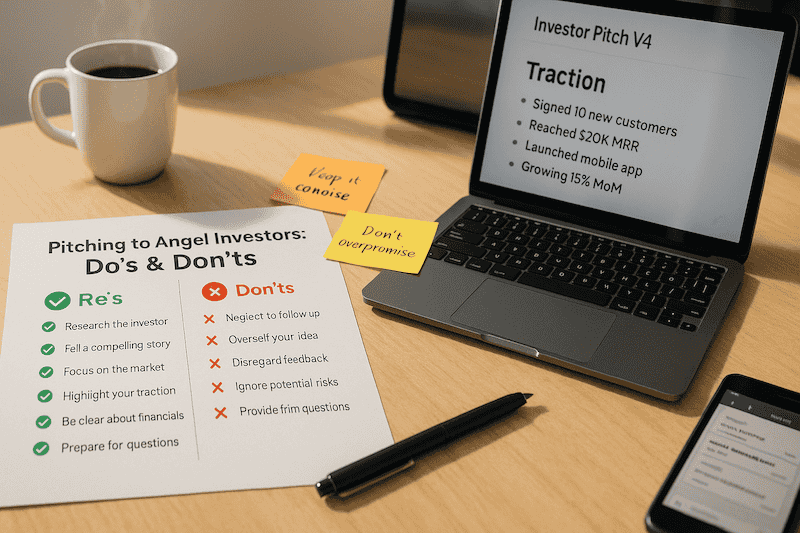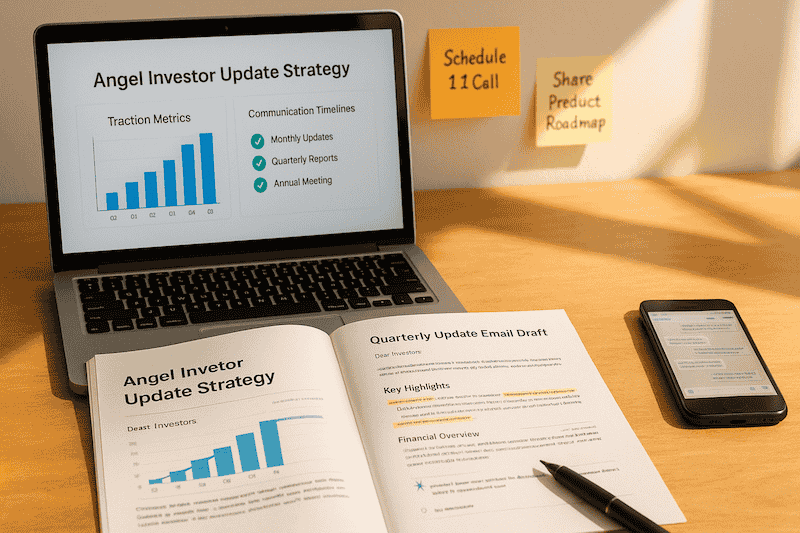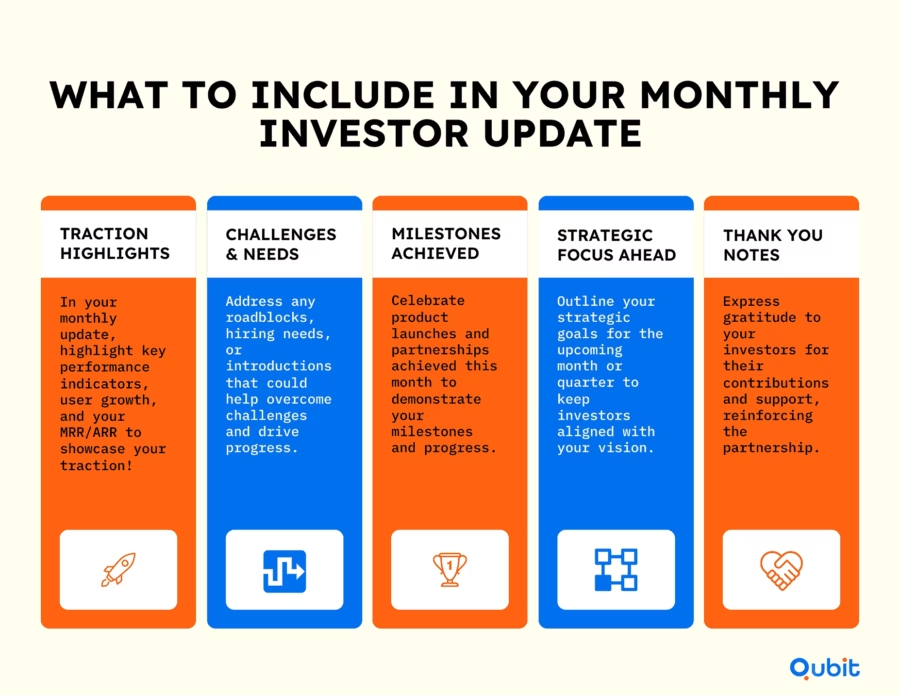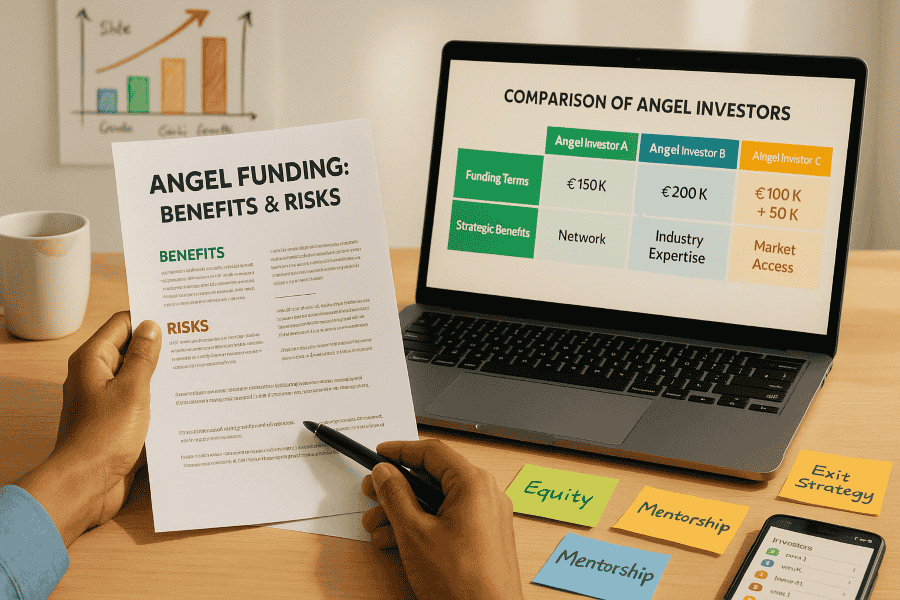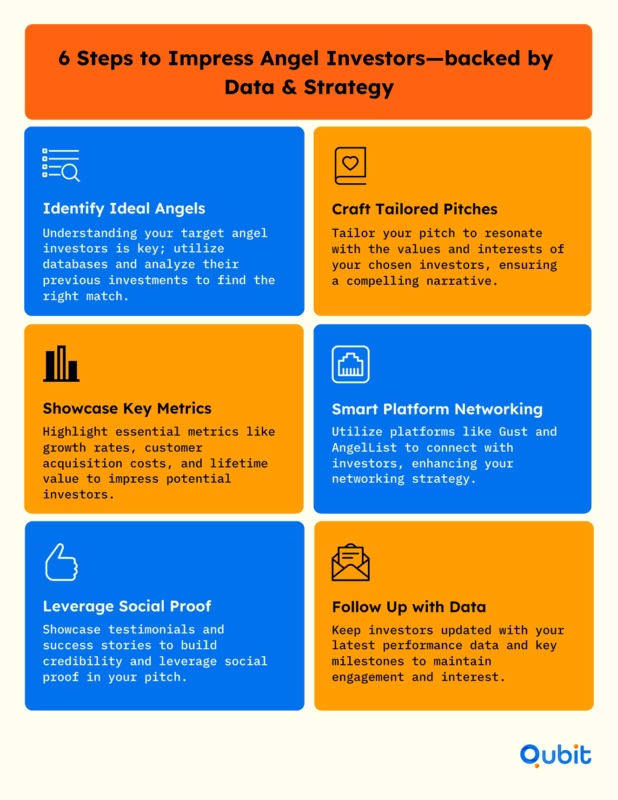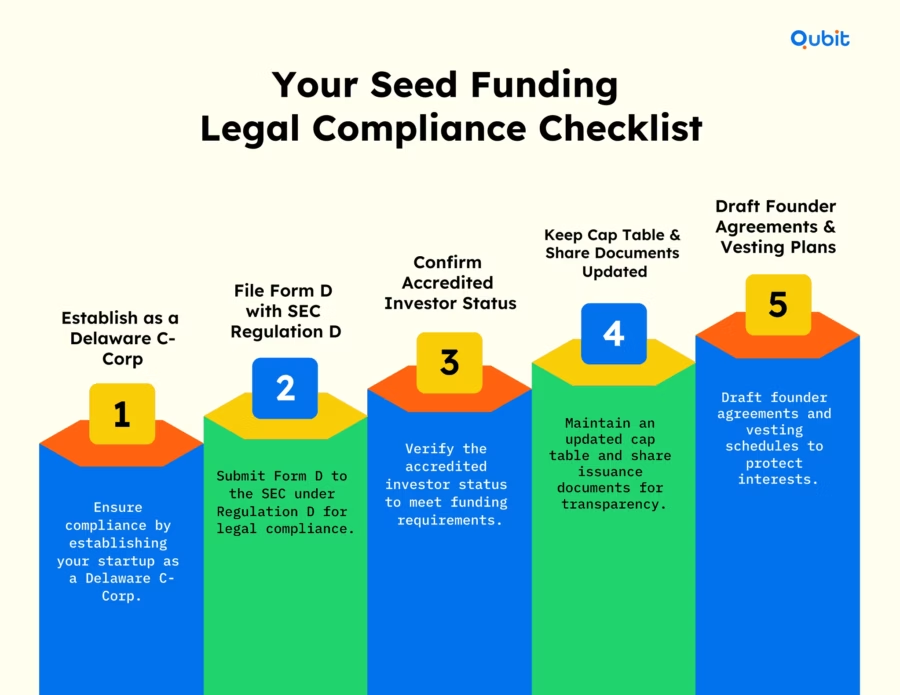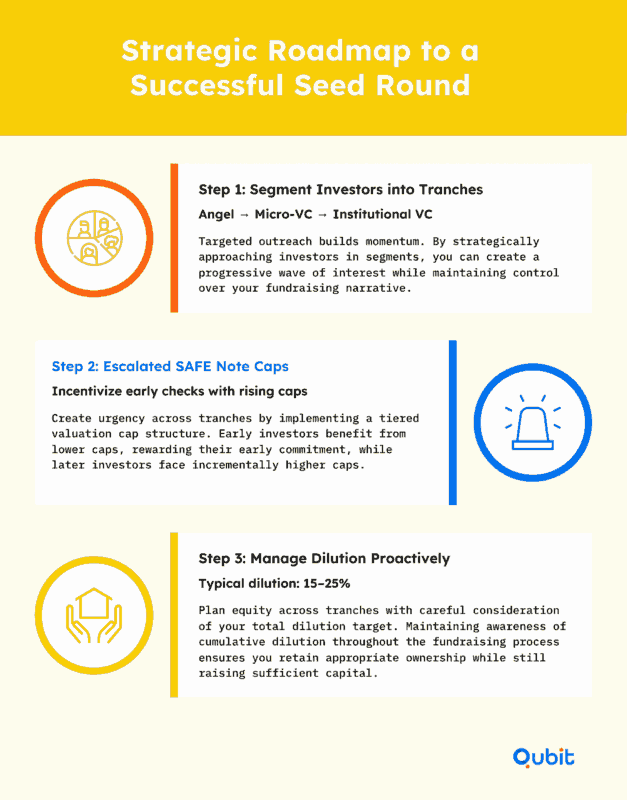Securing venture capital funding can transform a startup’s trajectory—but understanding how it works is essential to unlocking its full potential. With $91.5 billion invested in Q1 2025—the second-highest quarterly figure in a decade—venture capital remains a driving force behind innovation and growth. This blog offers a clear roadmap for startups looking to tap into this dynamic funding source.
Before diving into the process, it’s important to understand the broader landscape of startup financing. Knowing the different types of startup funding available helps entrepreneurs choose the path that best aligns with their goals. Whether you’re preparing a pitch deck or building strategic connections, this guide will equip you with actionable insights to move from preparation to a successful close
Ready to unlock growth? Let’s dive into what it really takes to secure venture capital funding.
Understanding Venture Capital Funding
Venture capital (VC) is a dynamic form of financing that fuels innovation by investing in early-stage companies with high growth potential. Understanding how venture capital works—including the different venture capital stages—is essential for startups aiming to scale rapidly. Unlike traditional loans or private equity, VC funding involves equity investments, where investors receive ownership stakes in exchange for capital. This approach not only provides critical funding but also offers strategic guidance and valuable industry connections.
Early-stage funding is particularly important, as it enables entrepreneurs to refine their products, grow their teams, and establish a strong market presence. As startups progress through the venture capital stages—from seed funding to Series A, B, and beyond—investors look for increasing signs of traction and scalability. Venture capitalists often expect substantial returns, typically realized through company exits such as acquisitions or IPOs. The investment process is rigorous, involving due diligence, valuation assessments, and structured funding rounds.
Highlighting the sector’s momentum, Q1 2025 recorded a staggering $91.5 billion in VC funding, marking the second-highest quarterly investment in a decade. This surge underscores growing confidence in early-stage deals and the evolving landscape of venture capital. To explore foundational concepts further and continue learning about venture capital, check out Entrepreneur VC.
Strategic Readiness for Venture Capital Funding
Securing venture capital funding requires more than just a compelling idea—it demands meticulous preparation and strategic foresight. Startups must first evaluate their business readiness by assessing key factors such as product-market fit, revenue models, and competitive advantages. These elements help demonstrate the viability of your business to potential investors.
A detailed business plan is essential. It should include comprehensive market analysis, financial projections, and a clear growth strategy. This document serves as a roadmap for your venture and reassures investors of your ability to execute.
Researching potential investors is equally critical. Platforms like VCStack can provide valuable insights into venture capital firms, allowing you to filter investors based on sector focus, fund size, and investment history. Identifying the right investors ensures alignment with your startup’s goals and industry.
Finally, preparing for pitch meetings is a crucial step. Craft concise, data-driven pitch decks that address common investor queries, such as scalability, profitability, and market differentiation. For additional guidance, consult resources like Startup VC to identify active funds that match your industry focus.
By following these steps and learning about venture capital, startups can position themselves effectively to attract venture capital funding and build lasting relationships with investors.
Mastering the Initial Pitch Meeting
Securing that first pitch meeting is often the most critical step in understanding how venture capital works. Warm introductions through trusted connections can significantly increase the likelihood of success, with data showing that referrals boost pitch acceptance rates by 20-25%. This underscores the importance of building relationships within professional networks, which account for 31% of deal flow in venture capital.
Establishing credibility early is essential for capturing investor interest. Engaging with industry thought leaders on platforms like Twitter can help foster rapport and open doors to valuable introductions. Approximately 1 in 4 warm referrals result in a pitch meeting, highlighting the strategic advantage of cultivating meaningful connections.
For founders aiming to learn how to get venture capital, prioritizing professional networking and securing warm referrals can be the difference between a missed opportunity and a successful pitch.
Crafting a Persuasive and Impactful Pitch
A compelling pitch is the cornerstone of attracting investor interest. To stand out, focus on creating a concise, visually engaging pitch deck that combines storytelling with solid financials. Investors are drawn to narratives that clearly differentiate your solution in the market, making it essential to highlight your unique value proposition early on.
When presenting financials, clarity is key. Clearly outline your revenue model and demonstrate how venture capitalists make money through your business. For example, you could showcase projected ROI and explain how your business aligns with investor expectations. This not only builds confidence but also positions your startup as a viable investment opportunity.
To further refine your pitch, consider listening to episodes from the GoingVC Podcast library, where real-world pitchers share insights and investor feedback. These discussions can help you identify gaps in your approach and enhance your storytelling techniques.
Lastly, keep your pitch deck visually appealing. Use graphics and charts to simplify complex data, ensuring investors can quickly grasp key points.
By blending a strong narrative with robust financials and a clear market differentiation, you can craft a pitch that resonates with investors and sets your startup apart.
Step-by-Step Guide to Securing VC Funding
Securing venture capital funding requires a structured approach to stand out in a competitive landscape. Begin by refining your pitch through practice sessions and gathering industry-specific feedback. This ensures your presentation resonates with investors and highlights your startup’s unique value proposition.
1. Formalize Your Pitch
Craft a compelling pitch deck that clearly outlines your business model, market opportunity, and financial projections. Practice extensively with peers and mentors, incorporating constructive feedback to strengthen your delivery.
2. Build Strong Networks
Being part of a venture capital firm’s professional network accounts for 31% of the deal flow. Strong connections can significantly boost warm leads and timely funding opportunities. Attend industry events, join startup communities, and actively engage with potential investors to expand your network.
3. Foster Sustained Communication
Maintaining consistent communication with investors is key to building trust. Share regular updates on your progress and milestones, even after initial meetings. This demonstrates transparency and commitment, laying the foundation for long-term relationships.
4. Secure Commitments
Once interest is established, negotiate terms and secure commitments promptly. Ensure your legal and financial documentation is in order to avoid delays during due diligence.
By following these steps, you can increase your chances of securing venture capital and establishing lasting investor relationships.
Discovering and Connecting with the Ideal Investors
Finding the right venture capital (VC) partners can significantly impact a startup’s growth trajectory. To begin, startups should focus on identifying VC firms that align closely with their industry and business model. For example, if your startup specializes in artificial intelligence, look for firms with a proven track record in funding AI-driven businesses. This targeted approach ensures that investors not only understand your vision but also bring relevant expertise to the table.
Modern tools like LinkedIn simplify the process of researching potential investors. Use advanced filters to pinpoint VCs who match your criteria, and explore shared professional affiliations to arrange warm introductions. For instance, searching for mutual connections can open doors to strategic outreach opportunities, fostering meaningful connections with potential funding partners.
Consistent communication is equally vital for building lasting relationships with investors. Regular updates about your progress, milestones, and challenges keep them engaged and demonstrate your commitment to transparency. As highlighted in the GoingVC LinkedIn page, investing time in strategic outreach and maintaining open lines of communication can strengthen your network and increase your chances of securing funding.
For additional guidance, consult resources like Faster Capital’s comprehensive guide, which offers step-by-step instructions for identifying the most suitable funding partners.
To learn more about building relationships with venture capital firms and understanding how do venture capital funds work, explore our article on building relationships with venture capital firms.
Understanding the overview of venture capital can further enhance your approach to finding the ideal investors and navigating the funding landscape effectively.
Streamlining the Due Diligence Process
The due diligence phase is critical for validating a startup’s financials, operations, and team dynamics. Investors rely on this process to assess risks and ensure alignment with their investment goals. To streamline this stage, startups must focus on preparation and transparency.
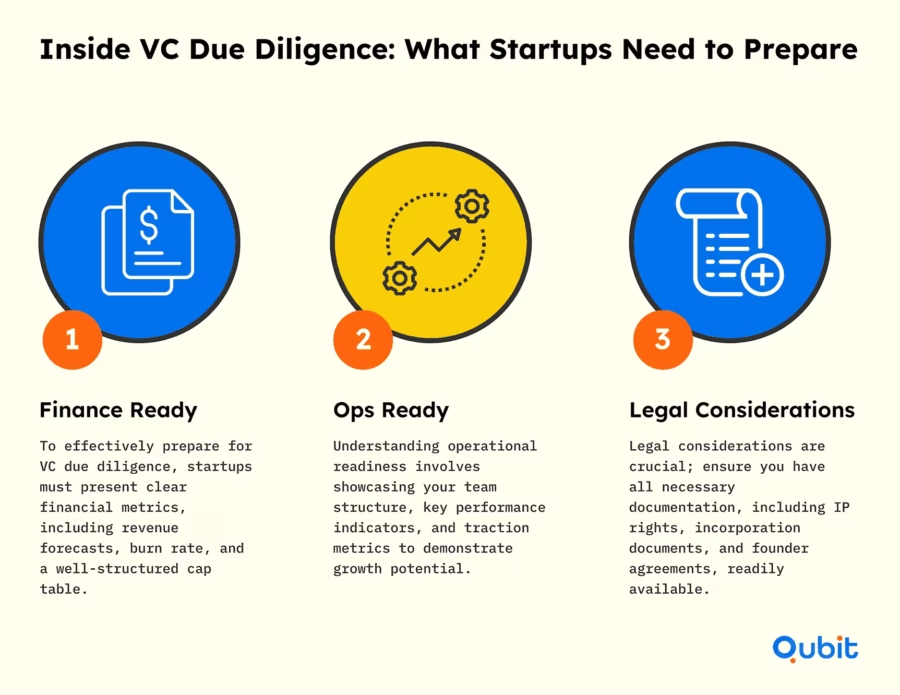
Organized documentation is the foundation of a smooth due diligence process. Ensuring readiness for the venture capital due diligence process demonstrates your business’s credibility and operational efficiency. This includes compiling financial statements, operational metrics, and legal records in a structured manner. Such preparation not only expedites investor analysis but also minimizes delays caused by incomplete or disorganized data.
Investor scrutiny often intensifies in competitive markets, as highlighted by the projected $400 billion global VC investments for 2025—a 40% increase from 2021 levels, driven by the tech sector. This heightened competition underscores the importance of proactive risk management. Addressing potential vulnerabilities upfront builds trust and positions your startup as a reliable investment opportunity.
Case studies like Klarna’s IPO postponement illustrate how thorough diligence and market awareness can inform critical strategic decisions. By anticipating challenges and presenting solutions, startups can navigate investor concerns effectively while safeguarding their valuation.
Streamlining due diligence is not just about meeting investor expectations; it’s about fostering confidence and laying the groundwork for long-term partnerships.
Mastering Term Negotiation and Deal Structuring
Understanding the intricacies of term sheets is essential for securing favorable agreements in venture capital deals. These documents outline ownership, valuation, and risk-sharing details, serving as the foundation for negotiations.
Key deal terms such as valuation caps, board seats, liquidation preferences, and anti-dilution clauses significantly impact the structure and outcome of a deal. For example, valuation caps determine the maximum price at which investors can convert their equity, while liquidation preferences ensure investors receive their returns before other stakeholders in the event of a sale. Each of these terms must be carefully analyzed to align with your business goals.
Expert legal and financial advice is indispensable during this process. Professionals can help identify potential risks, ensure compliance, and advocate for fair terms. Developing strong negotiation skills can empower founders to secure favorable terms when negotiating with venture capitalists. For deeper insights into this, refer to our guide on negotiating with venture capitalists.
A real-world example is CoreWeave’s acquisition of AI platform developer Weights & Biases in March 2025 for approximately $1.7 billion. This strategic move enhanced CoreWeave’s AI capabilities and positioned it for a successful IPO later that month, raising $1.5 billion and achieving a valuation of around $27 billion.
Mastering term negotiation and deal structuring is not just about understanding the numbers—it’s about creating agreements that set your business up for long-term success.
Finalizing Agreements and Securing Investments
Closing a deal involves meticulous attention to detail, ensuring all parties are aligned before moving forward. The final steps include reviewing legal and financial documents to confirm contract accuracy and mitigate risks. These reviews are crucial for safeguarding both the investor and the business, creating a solid foundation for future collaboration.
Once negotiations are complete, the funding milestone is officially marked, transitioning the business into a new phase of growth. For venture capitalists, this moment signifies the beginning of potential returns, answering the question, how do venture capitalists make money? Their earnings often stem from equity stakes, dividends, or eventual exits, such as IPOs or acquisitions.
Celebrating this achievement is more than symbolic; it sets a positive tone for the execution phase. Acknowledging the hard work and commitment that led to this point fosters motivation and strengthens relationships among stakeholders. This milestone is not just the end of negotiations but the start of a promising journey toward shared success.
Overcoming Challenges and Strategic Recommendations
Securing venture capital funding often presents hurdles that demand foresight and adaptability. Startups frequently encounter issues such as limited early traction or market validation, which can deter investor interest. To address these challenges, founders must prioritize proactive strategies that demonstrate their growth potential and market fit.
Actionable tactics like presenting data-driven insights and showcasing measurable milestones can significantly enhance credibility. For instance, emphasizing AI components within your business model can align with the rising interest in AI Dominance in VC Portfolios, where AI investments are projected to grow at a 35% CAGR through 2025. Similarly, integrating sustainability practices can cater to the growing emphasis on ESG Mandates in Funding, as climate tech investments have surged by 300% since 2023, with 40% of LPs requiring ESG compliance.
Access the Comprehensive VC Funding Research
Dive deeper into the world of venture capital funding with our extended research paper. This resource provides an in-depth analysis of sector trends, actionable strategies, and data-driven insights to help you master how to get venture capital effectively.
The research paper goes beyond the basics, offering advanced strategies tailored to different industries and funding stages. Readers can explore detailed data breakdowns, case studies, and expert recommendations that are designed to refine their approach to securing venture capital.
Whether you’re looking to understand emerging trends or optimize your pitch to investors, this comprehensive guide is your next step toward success.
Access the research paper now to elevate your funding strategy!
Conclusion
Securing venture capital funding requires a structured and strategic approach. From meticulous preparation to crafting a compelling, narrative-driven pitch deck, every step plays a pivotal role in capturing investor interest. The journey doesn’t end with the presentation—closing the deal demands thorough preparation and a data-backed strategy that instills confidence in potential investors.
At Qubit Capital, we understand the challenges startups face in this process. If you’re looking to secure the optimal funding for your startup, we can help through our Fundraising Assistance service. Contact us today to get started.
Key Takeaways
- A clear, structured roadmap is essential for startups to successfully secure venture capital funding.
- Early-stage preparation, including a solid business plan and pitch deck, sets the foundation for success.
- Warm introductions and sustained investor networking significantly increase pitch success rates.
- Diligent preparation for due diligence and smart negotiation practices protect your interests.
- Leveraging trends such as AI and ESG can further enhance investor appeal and market positioning.






